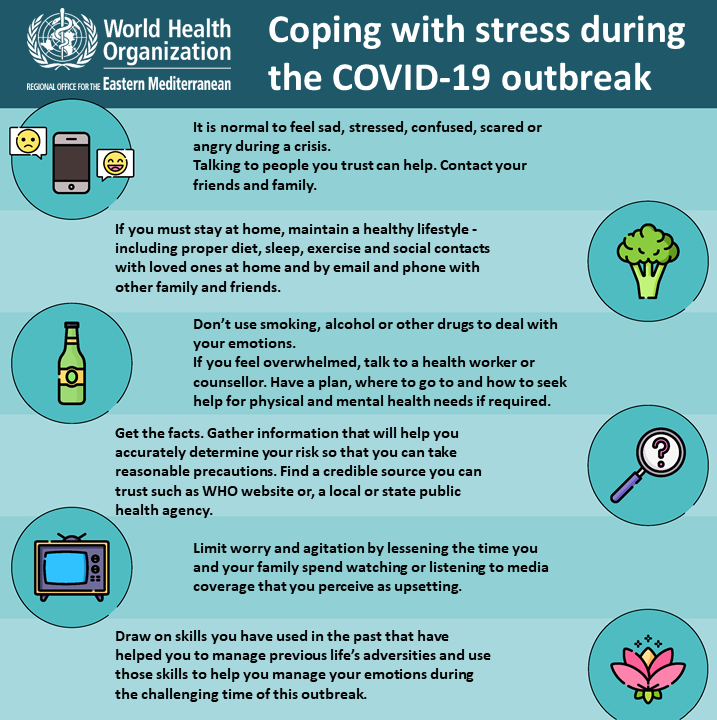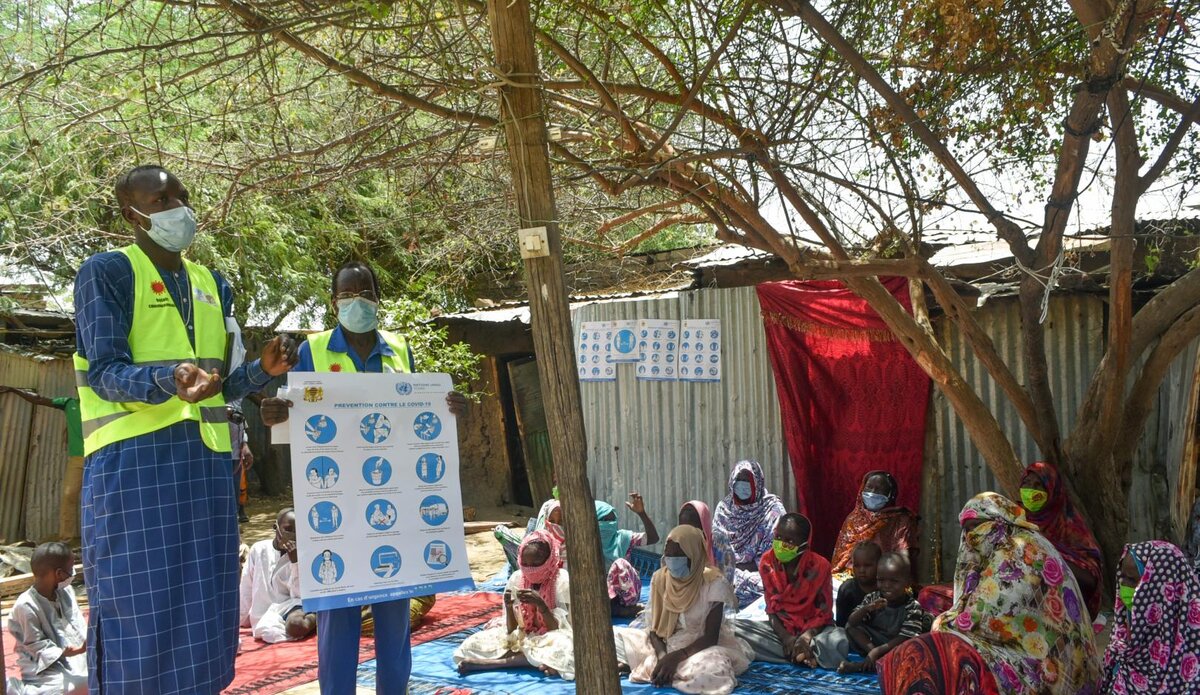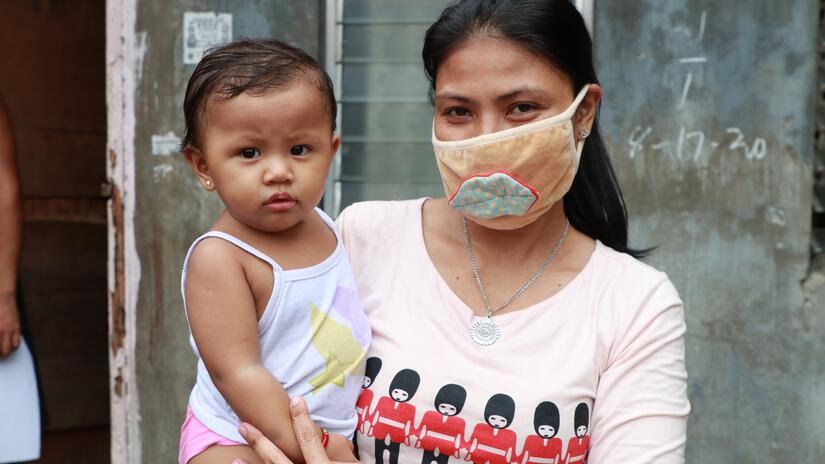Coping with Pandemic Challenges: Strategies for Resilience

Navigating the Storm: Strategies for Resilience Amid Pandemic Challenges
The ongoing global pandemic has presented unprecedented challenges, affecting individuals and communities on a profound level. However, amidst the chaos, there are strategies for coping with pandemic challenges that can foster resilience and empower individuals to navigate these uncertain times.
Prioritizing Mental Well-being
Coping with pandemic challenges begins with prioritizing mental well-being. The uncertainties, isolation, and constant news updates can take a toll on mental health. Establishing a routine, staying connected with loved ones, and seeking professional support are essential steps in maintaining mental resilience during these trying times.
Adapting to Remote Work and Learning
As remote work and online learning become the new norm, adapting to these changes is crucial. Creating a dedicated workspace, establishing boundaries between work and personal life, and embracing technology for effective communication are vital strategies for success in the era of remote work and learning.
Embracing Change and Flexibility
The pandemic has forced individuals and businesses to adapt to rapid changes. Embracing change and cultivating flexibility are key components of coping with pandemic challenges. This mindset shift allows for a more resilient response to unexpected situations and paves the way for creative problem-solving.
Fostering Connection Despite Physical Distancing
Physical distancing measures may limit face-to-face interactions, but fostering connections is more important than ever. Utilizing technology for virtual gatherings, reaching out to friends and family, and participating in online communities can help maintain a sense of connection and combat feelings of isolation.
Financial Planning and Stability
Economic uncertainties during the pandemic underscore the importance of financial planning. Creating a budget, building an emergency fund, and seeking financial advice can contribute to financial stability and alleviate stress associated with economic challenges.
Health and Wellness Practices
Prioritizing health and wellness is a fundamental aspect of coping with pandemic challenges. Establishing a healthy routine that includes regular exercise, nutritious eating, and adequate sleep can enhance physical resilience. Additionally, following recommended health guidelines contributes to overall well-being.
Learning New Skills and Hobbies
The pandemic provides an opportunity for personal growth through learning new skills or pursuing hobbies. Whether it’s picking up a musical instrument, acquiring a new language, or exploring creative pursuits, engaging in activities that bring joy and fulfillment can serve as a constructive coping mechanism.
Staying Informed Responsibly
While staying informed about the pandemic is essential, consuming excessive information can contribute to anxiety. Practicing responsible information consumption, fact-checking sources, and taking breaks from news updates can help strike a balance between staying informed and preserving mental well-being.
Community Support and Solidarity
Communities play a crucial role in coping with pandemic challenges. Offering support to neighbors, participating in community initiatives, and fostering a sense of solidarity contribute to collective resilience. Acts of kindness and empathy create a network of support that benefits individuals and the community as a whole.
Building a Resilient Future
Coping with pandemic challenges is not only about surviving the present but also about building a resilient future. By implementing these strategies, individuals can cultivate the strength needed to face ongoing uncertainties, contribute to collective well-being, and emerge from the pandemic stronger and more resilient.
For more information on coping with pandemic challenges and fostering resilience, visit Coping with Pandemic Challenges.
Navigating Life: Social Distancing in the Pandemic Era

Adapting to Change: Navigating Life Through Social Distancing in the Pandemic Era
The global pandemic has reshaped the way we live, work, and interact. Central to these changes is the practice of social distancing, a necessary measure to curb the spread of the virus. As we navigate life in this new normal, understanding the impact of social distancing and adopting strategies for its effective implementation becomes essential.
The Rationale Behind Social Distancing
Social distancing serves as a critical tool in reducing the transmission of infectious diseases, including COVID-19. By minimizing close contact between individuals, especially in crowded spaces, the spread of the virus can be slowed, protecting both individuals and the broader community. Understanding the rationale behind social distancing is fundamental to its successful implementation.
Challenges in Maintaining Social Connections
While the necessity of social distancing is clear, it comes with challenges, particularly in maintaining social connections. Human beings are inherently social creatures, and the physical separation mandated by social distancing measures can lead to feelings of isolation and loneliness. Finding innovative ways to stay connected becomes paramount.
Virtual Connectivity: Bridging the Gap
In the digital age, virtual connectivity has emerged as a crucial bridge to overcome the challenges posed by physical distancing. Video calls, virtual meetings, and online social platforms have become lifelines for maintaining connections with friends, family, and colleagues. Leveraging technology to foster virtual social interactions is an essential aspect of adapting to this new way of life.
Navigating Changes in Work and Education
Social distancing has profoundly affected the workplace and educational institutions. Remote work and online learning have become the norm, requiring adjustments in daily routines and approaches to collaboration. Adapting to these changes involves creating effective home workspaces, embracing digital tools, and finding a balance between professional and personal life.
Impact on Mental Health: Addressing Isolation and Stress
The isolation resulting from social distancing measures can have a significant impact on mental health. Feelings of loneliness, anxiety, and stress may arise. Acknowledging these challenges and actively seeking strategies for mental well-being, such as regular exercise, mindfulness practices, and staying connected virtually, are crucial for maintaining mental health in the pandemic era.
Reimagining Social Activities: Safety First
Social distancing doesn’t mean the end of social activities; rather, it requires a reimagination of how we engage with others. Outdoor activities, virtual events, and small, safely distanced gatherings become key components of socializing while prioritizing safety. Adhering to public health guidelines ensures that social interactions contribute to rather than compromise community health.
Community Support and Solidarity
The pandemic has underscored the importance of community support and solidarity. Acts of kindness, mutual aid initiatives, and supporting local businesses are ways in which communities can come together during these challenging times. Building a sense of solidarity fosters resilience and strengthens the collective response to the pandemic.
Balancing Caution and Connection
As vaccines become more widely available and restrictions evolve, finding the right balance between caution and connection is crucial. Adapting to changing circumstances while prioritizing public health guidelines ensures a responsible and considerate approach to social interactions. Flexibility and ongoing awareness are key to navigating the uncertainties of the pandemic era.
Looking to the Future: Lessons Learned and Resilience
Social distancing has been a central aspect of navigating the challenges posed by the pandemic. As we look to the future, the lessons learned from adapting to social distancing – resilience, innovation, and a renewed appreciation for human connections – will shape the way we approach public health and community well-being in the post-pandemic world.
For more insights on navigating life through social distancing, visit Social Distancing Pandemic.
Navigating Global Pandemic Challenges: Strategies for Coping

Understanding the Landscape of Global Pandemic Challenges
The world has faced unprecedented challenges with the onset of the global pandemic. From health crises to economic downturns, the impact has been profound. In this exploration, we delve into strategies and insights on coping with the multifaceted challenges posed by the ongoing global crisis.
Prioritizing Mental Health in the Face of Uncertainty
Coping with the uncertainties and stresses of a global pandemic requires a steadfast focus on mental health. From managing anxiety to fostering resilience, individuals worldwide have been adopting strategies to prioritize mental well-being amidst the challenges posed by the pandemic.
Adapting to Remote Work and Learning Environments
The shift towards remote work and online learning has been a significant adaptation to pandemic challenges. This section explores how individuals and organizations have coped with this transition, highlighting the importance of adaptability and technological integration in maintaining productivity and education.
Community Support and Solidarity: A Source of Strength
Amidst the challenges, communities globally have come together to provide support and solidarity. This section discusses the role of community initiatives, mutual aid networks, and collective efforts in helping individuals cope with the impacts of the pandemic and fostering a sense of belonging.
Economic Resilience and Innovations in Business
The pandemic has prompted a reevaluation of economic structures and business operations. This part of the article examines how individuals and businesses have showcased resilience, adapted to new market dynamics, and embraced innovations to navigate the economic challenges brought on by the global crisis.
Navigating Health Challenges: Prevention and Well-being
Coping with a global health crisis involves proactive measures for prevention and overall well-being. From adopting healthier lifestyles to staying informed about health guidelines, individuals have been taking steps to navigate the health challenges posed by the pandemic and protect themselves and their communities.
Digital Connection in a Socially Distanced World
The need for social distancing has accelerated the reliance on digital platforms for connection. This section explores how technology has played a crucial role in maintaining social ties, fostering virtual communities, and serving as a lifeline for individuals coping with the isolation caused by the pandemic.
Educational Resources for Coping Strategies
For those seeking resources on coping with global pandemic challenges, TheHealthyConsumer.com offers valuable insights and strategies. Visit the website for articles, tips, and resources dedicated to navigating the multifaceted challenges of the ongoing global crisis.
Strategies for Building Resilience
Building resilience is key to coping with the long-term impacts of a global pandemic. This section discusses strategies individuals can adopt to build personal and collective resilience, emphasizing the importance of adaptability, mindfulness, and maintaining a positive outlook.
Looking Forward: Hope and Opportunities Amidst Challenges
In the face of adversity, individuals and communities worldwide are finding hope and opportunities for growth. This concluding section reflects on the resilience demonstrated by people globally and explores the potential for positive transformations and opportunities that can emerge from coping with the challenges of a global pandemic.
In conclusion, coping with the challenges posed by a global pandemic requires a multifaceted approach. By prioritizing mental health, embracing change, fostering community support, and utilizing resources for coping strategies, individuals can navigate the complexities of this crisis. TheHealthyConsumer.com serves as a valuable resource for those seeking insights and guidance on coping with the ongoing global challenges.
Embracing Social Responsibility During the Pandemic

Embracing Social Responsibility During the Pandemic
The global pandemic has underscored the importance of social responsibility. This article explores the significance of collective action, community support, and individual choices in fostering a sense of responsibility during these challenging times.
Understanding the Impact of Individual Choices
Individual choices play a crucial role in the collective effort to combat the pandemic. From practicing proper hygiene and following safety guidelines to getting vaccinated, each person’s actions contribute to the overall well-being of the community. Understanding the impact of these choices is the foundation of pandemic social responsibility.
Community Support and Mutual Aid
Communities have demonstrated resilience through acts of support and mutual aid. Neighborly assistance, community initiatives, and support networks have flourished, providing vital resources and emotional support to those in need. Embracing and expanding these networks strengthens the fabric of social responsibility.
Promoting Public Health Measures
Promoting and adhering to public health measures is a key aspect of social responsibility. Wearing masks, practicing social distancing, and participating in vaccination efforts are essential components of a collective commitment to public health. These measures contribute to the safety of individuals and the broader community.
Supporting Local Businesses and Economies
The pandemic has posed significant challenges to local businesses and economies. Social responsibility extends to supporting these entities, whether through choosing local businesses for purchases, participating in community initiatives to bolster economic recovery, or advocating for policies that prioritize small businesses.
Environmental Stewardship in the New Normal
As society adapts to the “new normal,” considerations for environmental stewardship become integral to social responsibility. Sustainable practices, reduced waste, and eco-friendly choices contribute to the well-being of the planet and future generations. Navigating the pandemic with an eco-conscious mindset aligns with broader social responsibility goals.
Equity and Inclusion in Pandemic Response
Ensuring equity and inclusion in pandemic response efforts is paramount. Social responsibility involves addressing disparities in access to healthcare, resources, and support. Advocating for policies that prioritize vulnerable populations and working toward an inclusive recovery are vital aspects of responsible community action.
Educating and Combating Misinformation
A socially responsible community actively engages in educating its members and combating misinformation. Promoting accurate information about the virus, vaccines, and public health measures contributes to informed decision-making. Community-wide efforts to address and correct misinformation foster a more responsible and united front against the pandemic.
Volunteerism and Civic Engagement
Volunteerism and civic engagement are powerful expressions of social responsibility. Individuals contributing time, skills, and resources to community organizations, outreach programs, and vaccination clinics play a crucial role in strengthening the community’s response to the pandemic. Encouraging and facilitating volunteer efforts amplifies the impact of social responsibility.
Global Solidarity and Collective Action
The interconnected nature of the world emphasizes the need for global solidarity. Social responsibility extends beyond local communities to embrace a sense of collective action on a global scale. Supporting international efforts, sharing resources, and advocating for equitable vaccine distribution exemplify a commitment to global well-being.
Visit The Healthy Consumer for valuable insights and resources on navigating social responsibility during the pandemic. Together, let’s foster a community spirit that upholds the well-being of individuals and the world at large.
United for Resilience: Community Support Amidst Pandemic

Fostering Resilience: Community Support During the Pandemic
Communities play a pivotal role in navigating the challenges posed by the ongoing pandemic. In this article, we explore the various ways communities can come together to provide support, share resources, and foster resilience during these unprecedented times.
Understanding the Importance of Community Support
The pandemic has highlighted the interconnectedness of communities and the significance of mutual support. This section delves into the importance of community support in addressing the diverse needs arising from the pandemic, from health concerns to economic hardships and emotional well-being.
Local Initiatives and Mutual Aid Networks
Communities have responded to the pandemic by establishing local initiatives and mutual aid networks. This part of the article discusses how grassroots efforts, such as neighborhood support groups and community-led initiatives, have emerged to provide assistance with tasks like grocery shopping, prescription pickups, and emotional support.
Volunteerism and Community Outreach
Volunteerism has been a driving force in community support. This section explores the power of volunteers and community outreach programs in addressing the unique challenges posed by the pandemic. Whether delivering meals to vulnerable populations or offering virtual companionship, volunteers contribute significantly to community resilience.
Supporting Local Businesses and Entrepreneurs
Local businesses and entrepreneurs have faced unprecedented challenges during the pandemic. This part of the article discusses community efforts to support local economies, from patronizing neighborhood businesses to promoting online platforms and encouraging innovative solutions to sustain local commerce.
Educational Support for Students and Families
The pandemic has disrupted education, creating challenges for students and families. This section explores community initiatives to provide educational support, such as online tutoring programs, resource sharing, and collaborative efforts to ensure that all students have access to quality learning opportunities.
Emotional and Mental Health Resources
The pandemic has taken a toll on mental health, emphasizing the need for emotional support. This part of the article discusses community resources dedicated to mental health and well-being, including virtual support groups, counseling services, and initiatives aimed at reducing the stigma surrounding mental health issues.
Crisis Communication and Information Sharing
Effective communication is key during a crisis. This section explores how communities have utilized various channels for crisis communication and information sharing. From local newsletters to social media groups, keeping residents informed and connected fosters a sense of community and shared responsibility.
TheHealthyConsumer.com: Your Hub for Community Support Insights
For comprehensive insights into community support during the pandemic, visit TheHealthyConsumer.com. The website offers articles, tips, and resources dedicated to understanding and navigating the complexities of community support in these challenging times.
Looking Ahead: Strengthening Community Bonds for the Future
In conclusion, community support during the pandemic is not only about addressing immediate needs but also about strengthening community bonds for the future. This concluding section reflects on the resilience communities have shown and the importance of continued collaboration for a more connected and supportive society.
In summary, community support during the pandemic involves a range of initiatives, from local grassroots efforts to virtual support networks. TheHealthyConsumer.com serves as a valuable resource for those seeking guidance on understanding and contributing to the ongoing efforts of community support in these unprecedented times.
Mental Wellbeing in the Pandemic: Challenges and Strategies

In recent times, our world has been grappling with a unique kind of challenge that transcends borders and affects individuals on a global scale. The COVID-19 pandemic has not only posed a threat to physical health but has also brought to the forefront the importance of mental wellbeing. As societies navigate the complexities of lockdowns, social distancing, and uncertainty about the future, the impact on mental health has become increasingly evident. In this article, we explore the crucial connection between the pandemic and mental wellbeing.
The Toll on Mental Health:
The pandemic has introduced a myriad of stressors, ranging from fears of contracting the virus to economic uncertainties and social isolation. These challenges have taken a toll on mental health, leading to a surge in anxiety, depression, and other mental health disorders. The constant stream of pandemic-related information and the disruption of daily routines have contributed to heightened stress levels for many.
The Importance of Social Connection:
Social distancing measures, while necessary for public health, have inadvertently contributed to feelings of loneliness and isolation. Human beings are inherently social creatures, and the sudden disruption of social connections can have profound effects on mental wellbeing. Maintaining social ties, even through virtual means, becomes crucial in alleviating the impact of isolation and fostering a sense of community.
Adapting to Change:
One of the key factors influencing mental health during the pandemic is the need for individuals to adapt to a rapidly changing environment. Uncertainty about the future, coupled with the need to adapt to new work and lifestyle patterns, can be a significant source of stress. Building resilience and developing coping mechanisms are essential components of navigating these changes while safeguarding mental wellbeing.
The Role of Physical Health:
Physical and mental health are intricately linked, and the pandemic has underscored the importance of maintaining a healthy lifestyle. Regular exercise, a balanced diet, and sufficient sleep play crucial roles in supporting mental health. Establishing and maintaining healthy habits contribute not only to physical resilience but also to emotional and psychological well-being.
Seeking Professional Support:
Acknowledging the challenges to mental health and seeking professional support is a crucial step in mitigating the impact of the pandemic. Mental health professionals provide valuable guidance, coping strategies, and a supportive space for individuals to navigate their emotions. The destigmatization of seeking mental health support is an essential aspect of fostering a culture that prioritizes well-being.
Community Initiatives for Mental Wellbeing:
Communities play a vital role in supporting mental health initiatives. From local support groups to online communities, the shared experience of the pandemic can be a unifying force. By fostering a sense of solidarity and providing resources for mental health awareness, communities can contribute significantly to the collective well-being of their members.
In the midst of these challenging times, it’s crucial to recognize the interconnectedness of physical and mental health. As we navigate the complexities of the pandemic, prioritizing mental wellbeing is not just a personal responsibility but a collective endeavor that requires a supportive societal framework.
For more information on maintaining mental wellbeing during the pandemic, consider exploring resources such as Mental Wellbeing Pandemic. These resources can provide valuable insights, tips, and support for individuals seeking to prioritize and enhance their mental health in the face of ongoing challenges.
Navigating Containment: Pandemic Safety Measures
Navigating Containment: Pandemic Safety Measures
The global pandemic has necessitated the implementation of stringent containment measures to curb the spread of the virus. In this article, we explore the various strategies and safety measures employed in the ongoing battle against the pandemic.
Social Distancing: A Fundamental Containment Strategy
Social distancing stands as one of the fundamental strategies in pandemic containment. This measure involves maintaining physical distance from others to minimize the risk of viral transmission. Implementing social distancing in public spaces, workplaces, and social gatherings helps reduce the spread of the virus.
Mask-Wearing: A Protective Barrier Against Transmission
The widespread adoption of mask-wearing has become a critical containment measure. Masks serve as a protective barrier, preventing respiratory droplets that may contain the virus from reaching others. This simple yet effective measure is widely recommended in various settings to enhance community safety.
Hygiene Protocols: Promoting Hand and Surface Sanitization
Hygiene protocols, including frequent handwashing and surface sanitization, play a crucial role in containment efforts. Proper hand hygiene reduces the risk of virus transmission through contact, while disinfecting commonly-touched surfaces helps eliminate potential sources of contamination.
Testing and Contact Tracing: Identifying and Isolating Cases
Testing and contact tracing are essential components of containment strategies. Identifying individuals infected with the virus through widespread testing allows for prompt isolation and treatment. Contact tracing helps identify and notify individuals who may have been exposed, preventing further transmission.
Quarantine and Isolation: Restricting Movement to Prevent Spread
Quarantine and isolation are key containment measures for individuals who have been exposed to the virus or tested positive. Quarantine restricts the movement of individuals who may have been exposed, while isolation separates confirmed cases from others to prevent further spread.
Travel Restrictions: Managing Cross-Border Transmission
Implementing travel restrictions is crucial in managing cross-border transmission of the virus. This may involve border closures, entry requirements, or quarantine measures for travelers. By controlling the movement of individuals across regions, countries aim to prevent the introduction and spread of new virus variants.
Vaccination Campaigns: Building Population Immunity
Vaccination campaigns play a pivotal role in containment and long-term pandemic management. By vaccinating a significant portion of the population, herd immunity is achieved, reducing the overall transmission of the virus. Vaccines provide a powerful tool in preventing severe illness and mitigating the impact of the pandemic.
Public Awareness and Communication: Fostering Compliance
Effective communication and public awareness campaigns are essential for fostering compliance with containment measures. Clear and transparent communication helps educate the public about the importance of safety measures, dispels misinformation, and encourages widespread adherence to recommended guidelines.
Community Support and Adaptation: Building Resilience
Community support and adaptation are critical for successful containment. Communities that support vulnerable members, adapt to changing circumstances, and foster a collective sense of responsibility contribute significantly to the overall success of containment measures.
Accessing Containment Measures Pandemic: A Comprehensive Resource
For additional insights and resources on containment measures during the pandemic, consider exploring Containment Measures Pandemic. This centralized hub offers a wealth of information, practical tips, and support for individuals and communities navigating the complexities of pandemic containment, ensuring a safe and informed approach.
Navigating Financial Assistance During the Pandemic

The Landscape of Financial Assistance During the Pandemic
The COVID-19 pandemic has significantly impacted individuals and businesses globally, creating an urgent need for financial assistance. As the world navigates through these challenging times, various financial support mechanisms have emerged to alleviate the economic strain caused by the pandemic.
Government Initiatives and Support Programs:
Governments worldwide have been at the forefront of providing financial assistance during the pandemic. Stimulus packages, unemployment benefits, and business grants have been rolled out to support individuals and businesses affected by lockdowns and economic uncertainties. These initiatives aim to stabilize economies and offer a safety net for those facing financial hardships.
Nonprofit Organizations:
In addition to government efforts, nonprofit organizations have played a crucial role in extending financial assistance. These entities often focus on specific vulnerable populations or sectors severely impacted by the pandemic. From providing direct cash assistance to offering grants for essential needs, nonprofits contribute significantly to the overall financial relief efforts.
Corporate Aid and Community Support:
Many corporations have recognized the importance of contributing to their communities during these challenging times. Corporate social responsibility initiatives, community grants, and partnerships with local organizations have become prevalent. Such collaborations aim to provide financial assistance where it is needed most, ensuring a collective effort to address the economic fallout of the pandemic.
Navigating Personal Finances:
On an individual level, navigating personal finances has become a crucial aspect of surviving the financial challenges of the pandemic. Budgeting, emergency fund management, and seeking financial advice are essential components of coping with economic uncertainties. Financial literacy programs have become instrumental in empowering individuals to make informed decisions about their money during these unprecedented times.
Online Resources and Financial Tools:
The digital era has facilitated access to various online resources and financial tools designed to assist individuals and businesses in managing their finances. From budgeting apps to online financial education platforms, the internet has become a valuable source of information and support for those seeking financial assistance during the pandemic.
Financial Assistance Pandemic: A Holistic Approach
Amidst these varied sources of financial assistance, it’s crucial to adopt a holistic approach to address the diverse needs of individuals and businesses. Combining government support, nonprofit initiatives, corporate aid, personal finance strategies, and leveraging online resources creates a comprehensive framework for navigating the financial challenges posed by the pandemic.
To explore more insights on Financial Assistance during the Pandemic, visit Financial Assistance Pandemic for valuable resources and guidance.
Conclusion:
The landscape of financial assistance during the pandemic is multifaceted, encompassing governmental, nonprofit, and corporate efforts, along with individual financial strategies. Navigating these resources collectively provides a more robust framework for overcoming the economic challenges brought about by the pandemic. As the world continues to adapt to the evolving situation, the collaboration between various sectors remains vital in building a resilient and financially supported global community.






